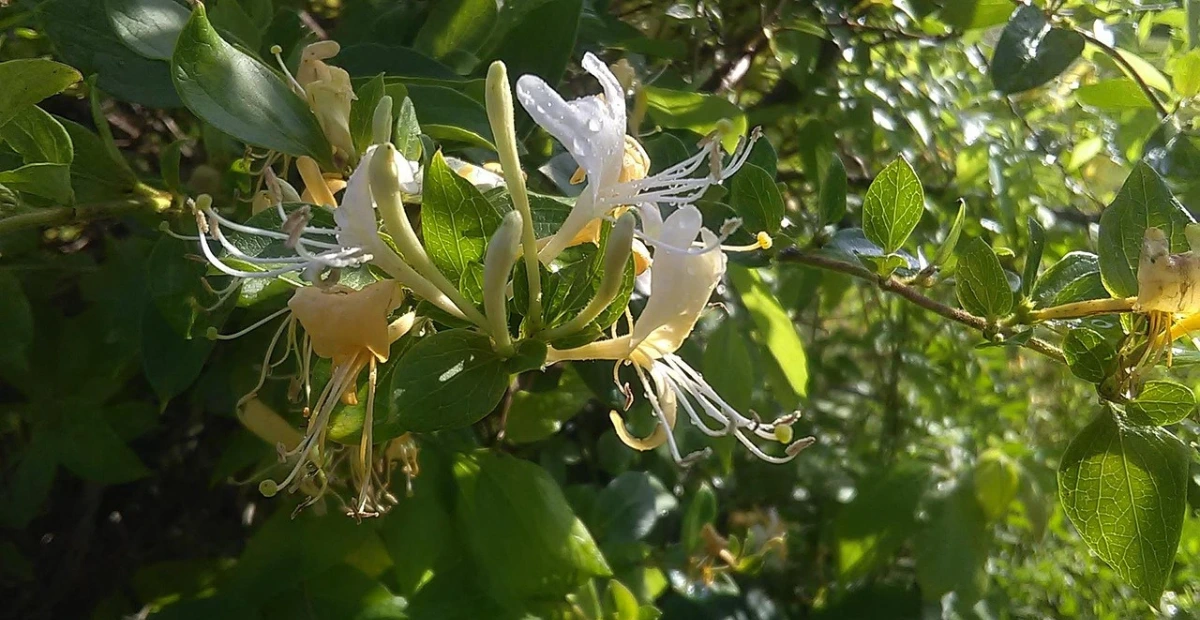There’s something magical about stepping into a garden filled with the fragrance of honeysuckle. The sweet, delicate scent drifts through the air, drawing bees and butterflies to the blossoms while creating a serene, almost ethereal atmosphere. If you’ve ever longed for a fragrant garden, you’ve likely considered planting a honeysuckle vine. It’s a versatile, low-maintenance plant that not only adds visual beauty but also an intoxicating aroma to your space. But how exactly do you grow this lovely vine? The good news is that it’s simpler than you might think.
advertisement
In this guide, we’ll walk you through the five easy steps to successfully grow a honeysuckle vine in your own garden. From choosing the right location to caring for the plant, you’ll be able to enjoy the fruits (or rather, the flowers) of your labor in no time. Let’s dive in!
Table of Contents
What is a Honeysuckle Vine?
Before we jump into the growing process, let’s take a moment to appreciate what exactly a honeysuckle vine is. Known for its vibrant, tubular flowers and rich fragrance, honeysuckle is a climbing or sprawling plant that belongs to the genus Lonicera. It’s often used to cover trellises, fences, and arbors, adding both beauty and a natural fragrance to gardens.
advertisement
There are various types of honeysuckle vines, but the most popular varieties for gardeners are the Japanese honeysuckle (Lonicera japonica), trumpet honeysuckle (Lonicera sempervirens), and coral honeysuckle (Lonicera sempervirens). These vines can thrive in a variety of climates, from cooler regions to warmer ones, making them a versatile option for most gardeners.
Step 1 – Choose the Right Location for Your Honeysuckle Vine
One of the most important factors in successfully growing honeysuckle is choosing the right location. These vines are vigorous growers, so selecting a spot that gives them plenty of space and the right growing conditions is key. Let’s explore what you need to consider when choosing the perfect location for your honeysuckle vine.
Sunlight Requirements
Honeysuckle vines thrive in full sun, meaning they need at least 6 hours of direct sunlight each day to grow strong and healthy. Without sufficient sunlight, the vine may become leggy and produce fewer flowers. However, some varieties, like trumpet honeysuckle, can tolerate partial shade, making them a good option for areas that don’t get full sun all day.
Soil Conditions
For best results, honeysuckle vines prefer well-draining soil that is rich in organic matter. You want a soil texture that is loamy or sandy, as heavy clay soil can retain too much water and lead to root rot. If you have clay soil, consider amending it with compost or sand to improve drainage.
Honeysuckle also prefers slightly acidic to neutral soil, with a pH range of about 6.0-7.0. You can test your soil’s pH using a simple soil testing kit, available at most garden centers. If your soil is too acidic, adding lime will help raise the pH; if it’s too alkaline, adding sulfur can lower the pH.
advertisement
Space Considerations
Honeysuckle vines are known for their vigorous growth, sometimes reaching heights of 10-20 feet in a single year. It’s crucial to plan for plenty of space when planting your vine. Look for an area where the vine can spread vertically or horizontally without becoming overcrowded.
If you’re planting your honeysuckle on a trellis, fence, or arbor, make sure the structure is sturdy enough to support the plant’s growth. Honeysuckle vines will quickly cling to the support with their tendrils, so the stronger the support, the better.
Step 2 – Prepare the Soil for Planting
Once you’ve chosen the perfect spot, it’s time to prepare the soil for planting your honeysuckle vine. Proper soil preparation ensures that your vine has the best chance of thriving.
Loosen the Soil
Before planting, it’s important to loosen the soil to a depth of about 12-18 inches. This will encourage the honeysuckle vine’s roots to spread out and establish a solid foundation. If your soil is compacted, consider using a garden fork or shovel to break it up.
advertisement
Amend the Soil with Organic Matter
Adding organic matter, such as compost or well-rotted manure, to the soil improves its structure and fertility. This helps the soil retain moisture while also providing the nutrients your honeysuckle needs to grow. Spread about 2-3 inches of compost over the planting area and work it into the soil.
Ensure Good Drainage
Honeysuckle vines do not like to have “wet feet,” meaning they don’t tolerate standing water around their roots. If your soil has poor drainage, consider amending it with sand or perlite to improve water flow. You can also plant your honeysuckle in a raised bed to provide better drainage.
Step 3 – Plant Your Honeysuckle Vine Properly
With the soil prepared and your ideal location selected, it’s time to plant your honeysuckle vine. Planting at the right time and following proper planting techniques ensures your vine has the best chance of thriving.
When to Plant Honeysuckle Vine
The best time to plant honeysuckle vine is in early spring or fall when the weather is cooler. Planting in early spring gives the vine a chance to establish its roots before the heat of summer arrives, while fall planting allows the vine to take advantage of cooler weather and establish itself before winter sets in.
How to Plant Honeysuckle Vine
advertisement
- Dig a Hole: Start by digging a hole that’s about twice as wide as the root ball of the vine and as deep as the root ball’s height.
- Position the Vine: Place the vine in the hole, ensuring that the top of the root ball is level with the surrounding soil. If planting on a trellis or support structure, position the vine so that it can easily be trained upwards.
- Fill with Soil: Gently fill the hole with the soil you prepared earlier, pressing it down lightly to remove any air pockets.
- Water Thoroughly: After planting, water the honeysuckle vine thoroughly to help settle the soil around the roots.
Mulch Around the Base
After planting, apply a 2-3 inch layer of mulch around the base of the vine. Mulch helps retain moisture, suppress weeds, and keep the soil temperature stable. Be sure to keep the mulch away from the base of the plant to prevent rot.
Step 4 – Care for Your Honeysuckle Vine as It Grows
Now that your honeysuckle vine is planted, it’s important to care for it properly to ensure healthy growth. While honeysuckle vines are generally low-maintenance, they do require some ongoing care.
advertisement
Watering
Honeysuckle vines prefer consistently moist soil, especially during the first growing season. Water your vine regularly, especially during dry periods, to help it establish a deep root system. However, be careful not to overwater. The soil should be moist but not soggy. In areas with heavy rainfall, you may need to adjust your watering schedule to prevent waterlogging.
Fertilizing
Fertilize your honeysuckle vine in early spring with a balanced, slow-release fertilizer. A general-purpose fertilizer with equal parts nitrogen, phosphorus, and potassium will provide the nutrients your vine needs to grow strong and produce vibrant blooms. Avoid over-fertilizing, as this can lead to excessive leaf growth with fewer flowers.
advertisement
Pruning
Pruning your honeysuckle vine helps maintain its shape and encourages more blooms. Trim back any dead or damaged branches throughout the growing season. After the plant has finished blooming, prune back any overgrown or tangled vines. This will help the plant produce more flowers next year and prevent it from becoming too unruly.
Pest and Disease Control
Honeysuckle vines are relatively pest-resistant, but they can occasionally attract aphids, scale insects, or spider mites. Regularly check the leaves and stems for signs of pests. If you notice an infestation, treat it with an organic insecticidal soap or neem oil.
Honeysuckle vines are also prone to a few diseases, including powdery mildew and rust. To prevent these, ensure the vine has proper air circulation by pruning regularly and avoiding overhead watering, which can promote fungal growth.
Step 5 – Support and Train Your Honeysuckle Vine
Since honeysuckle vines are climbers, they need support to grow vertically or spread across structures. Here’s how you can provide the proper support and train your vine to grow in the direction you desire.
Use a Trellis, Fence, or Arbor
Honeysuckle vines naturally climb by twining their stems around nearby supports. Install a trellis, fence, or arbor before planting your vine, or immediately after planting, to ensure the vine has something to cling to as it grows. If you’re growing your honeysuckle on a fence or wall, make sure the structure is sturdy enough to support its weight as the vine grows.
advertisement
Training Your Vine
To help your honeysuckle vine grow in the desired direction, gently tie the stems to the support structure with soft twine or plant ties. As the vine grows, continue to guide the stems toward the support. Regularly check for new shoots and train them along the trellis or fence. With time, the vine will naturally grow along the structure, creating a beautiful display of flowers.
Troubleshooting Common Honeysuckle Vine Problems
While honeysuckle vines are generally easy to care for, they can occasionally experience a few common issues. Here are some potential problems and how to solve them:
Why Is My Honeysuckle Not Flowering?
If your honeysuckle vine is growing but not producing flowers, several factors could be at play. Common causes include:
- Too much shade: Honeysuckle vines need full sun to bloom profusely.
- Improper pruning: If you prune your vine too early or too heavily, you may cut off the flower buds. Always prune after flowering.
- Nutrient imbalance: Too much nitrogen can promote leaf growth at the expense of flowers. Use a balanced fertilizer and avoid excessive nitrogen.
Pest and Disease Problems
As mentioned earlier, honeysuckle vines can be susceptible to pests like aphids and diseases like powdery mildew. Regular monitoring and treatment with organic solutions can help keep these issues at bay.
advertisement
Conclusion: Grow Your Own Honeysuckle Vine
By following these five easy steps, you’ll be well on your way to growing a healthy, vibrant honeysuckle vine in your garden. From selecting the perfect location to providing the right care and support, you can enjoy the beauty and fragrance of this delightful plant for years to come. Whether you’re growing it to attract pollinators or simply to enjoy its sweet scent, honeysuckle is a rewarding addition to any garden.
Ready to plant your honeysuckle vine? Don’t wait! Choose your favorite variety, prepare your garden, and start growing a fragrant, beautiful vine today. Your garden—and your senses—will thank you!


